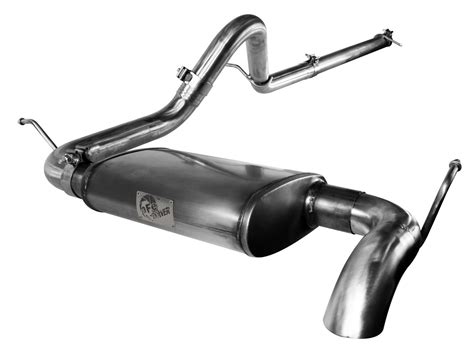Enhance your off-road adventures with the powerful and durable 2010 Jeep Wrangler exhaust system, engineered to deliver optimal performance and sound.

2010 Jeep Wrangler Exhaust: A Comprehensive Guide
Introduction
The 2010 Jeep Wrangler is a legendary off-road vehicle known for its rugged capabilities and iconic design. As with any vehicle, the exhaust system plays a crucial role in ensuring optimal performance, efficiency, and sound quality. This comprehensive guide delves into the intricacies of the 2010 Jeep Wrangler exhaust system, covering its components, function, common issues, upgrades, and maintenance tips.
Components of the 2010 Jeep Wrangler Exhaust System
The 2010 Jeep Wrangler exhaust system comprises several key components, each contributing to the overall functionality and performance of the vehicle. These components include:
1. Exhaust Manifold:
The exhaust manifold is a vital component that collects and directs exhaust gases away from the engine. It is typically made of cast iron or stainless steel and is designed to withstand high temperatures.
2. Catalytic Converter:
The catalytic converter is responsible for reducing harmful pollutants in exhaust gases. It utilizes a chemical reaction to convert harmful compounds, such as hydrocarbons and carbon monoxide, into less harmful substances like carbon dioxide and water vapor.
3. Oxygen Sensor:
The oxygen sensor plays a crucial role in regulating the air-fuel mixture by monitoring the amount of oxygen in the exhaust gases. This information is relayed to the engine's computer, which adjusts the fuel injection accordingly to ensure optimal combustion.
4. Muffler:
The muffler is designed to reduce the noise generated by the exhaust gases. It consists of a series of chambers and baffles that dampen the sound waves, resulting in a quieter exhaust note.
5. Tailpipe:
The tailpipe is the final component of the exhaust system and is responsible for expelling exhaust gases from the vehicle. It is typically made of stainless steel or aluminized steel and can vary in length and diameter depending on the specific vehicle configuration.
Function of the 2010 Jeep Wrangler Exhaust System
The primary function of the 2010 Jeep Wrangler exhaust system is to efficiently remove exhaust gases from the engine and release them into the atmosphere. This process involves several key steps:
1. Exhaust Gas Collection:
Exhaust gases are produced as a byproduct of the combustion process in the engine. These gases, consisting of a mixture of various compounds, including carbon dioxide, water vapor, hydrocarbons, and nitrogen, are initially directed into the exhaust manifold.
2. Catalytic Conversion:
As the exhaust gases flow through the catalytic converter, they undergo a chemical reaction that converts harmful pollutants into less harmful substances. This process helps reduce the vehicle's emissions and ensures compliance with environmental regulations.
3. Noise Reduction:
The muffler plays a crucial role in reducing the noise generated by the exhaust gases. Its internal chambers and baffles absorb and dampen the sound waves, resulting in a quieter exhaust note.
4. Exhaust Gas Expulsion:
Once the exhaust gases have been treated and their noise has been reduced, they are expelled from the vehicle through the tailpipe. The tailpipe's design and length help direct the gases away from the vehicle and contribute to the overall sound quality.
Common Issues with the 2010 Jeep Wrangler Exhaust System
Like any mechanical system, the 2010 Jeep Wrangler exhaust system can experience various issues over time. Some common problems include:
1. Rust and Corrosion:
Exposure to moisture, road salt, and other corrosive elements can lead to rust and corrosion in the exhaust system components, particularly the muffler and tailpipe. This can result in leaks and reduced performance.
2. Exhaust Leaks:
Leaks in the exhaust system can occur due to damaged or loose components, such as gaskets, clamps, or pipes. Exhaust leaks can lead to increased noise, reduced engine performance, and potential safety hazards.
3. Clogged Catalytic Converter:
Over time, the catalytic converter can become clogged due to accumulated deposits and contaminants. This can restrict the flow of exhaust gases and result in reduced engine performance and increased emissions.
4. Muffler Damage:
The muffler can sustain damage from road hazards, such as potholes or debris, leading to holes or cracks. This can result in increased noise and reduced exhaust system efficiency.
Upgrades for the 2010 Jeep Wrangler Exhaust System
Enthusiasts and off-road enthusiasts often seek to enhance the performance and sound of their 2010 Jeep Wrangler exhaust systems. Popular upgrades include:
1. Performance Exhaust Manifold:
Upgrading the exhaust manifold can improve exhaust flow and enhance engine performance, particularly at higher RPMs.
2. High-Flow Catalytic Converter:
A high-flow catalytic converter can improve exhaust flow while still maintaining emissions compliance. This upgrade can lead to increased horsepower and torque.
3. Performance Muffler:
Aftermarket performance mufflers are designed to enhance the exhaust note, providing a more aggressive or throaty sound.
4. Cat-Back Exhaust System:
A complete cat-back exhaust system replaces the catalytic converter, muffler, and tailpipe, offering a comprehensive upgrade for improved performance and sound.
Maintenance Tips for the 2010 Jeep Wrangler Exhaust System
Regular maintenance is crucial for ensuring the longevity and optimal performance of the 2010 Jeep Wrangler exhaust system. Essential maintenance practices include:
1.

